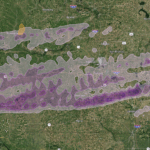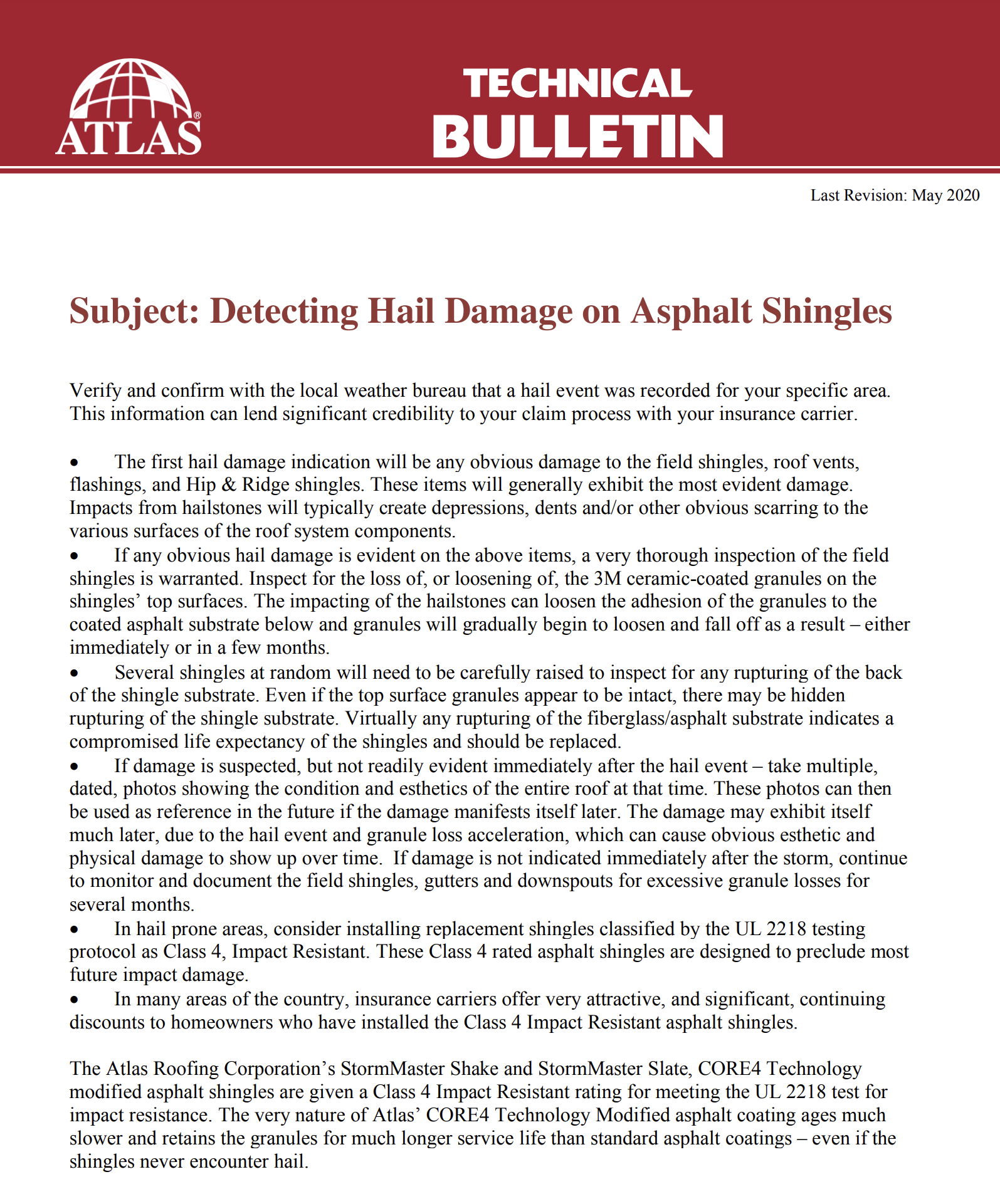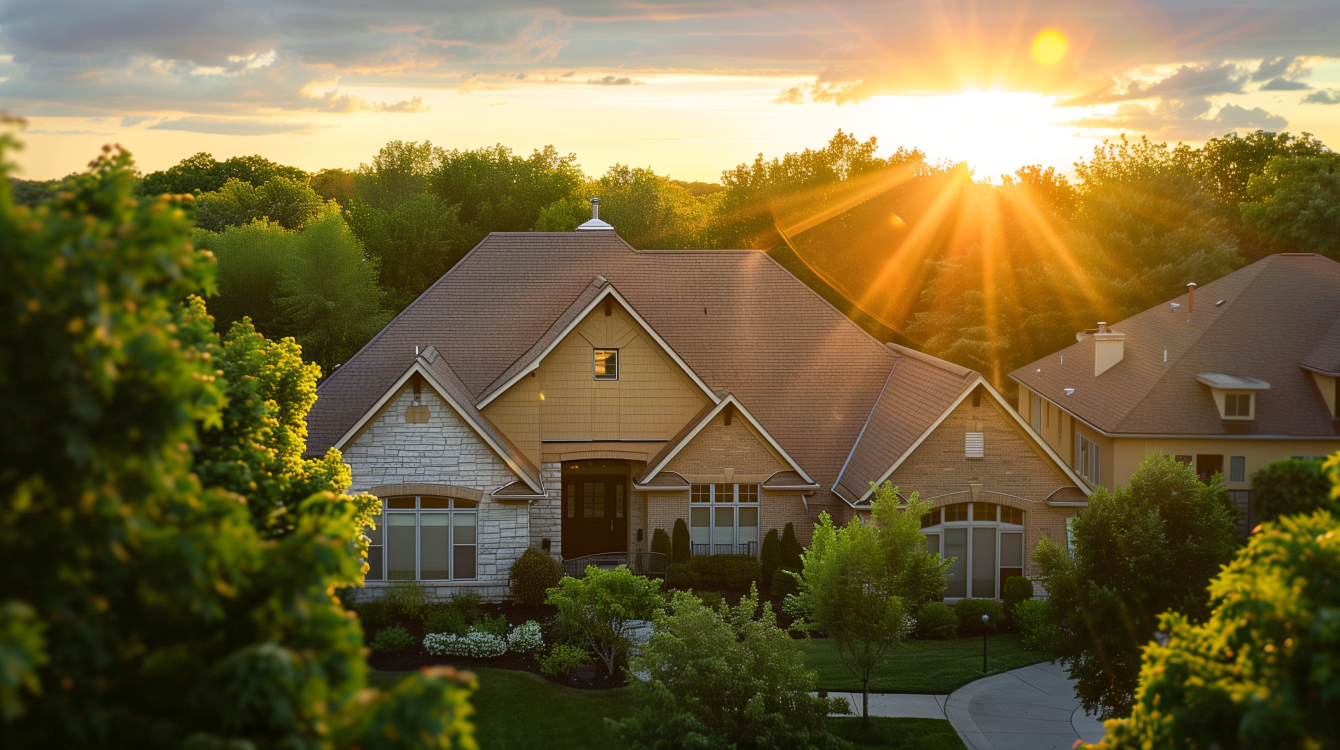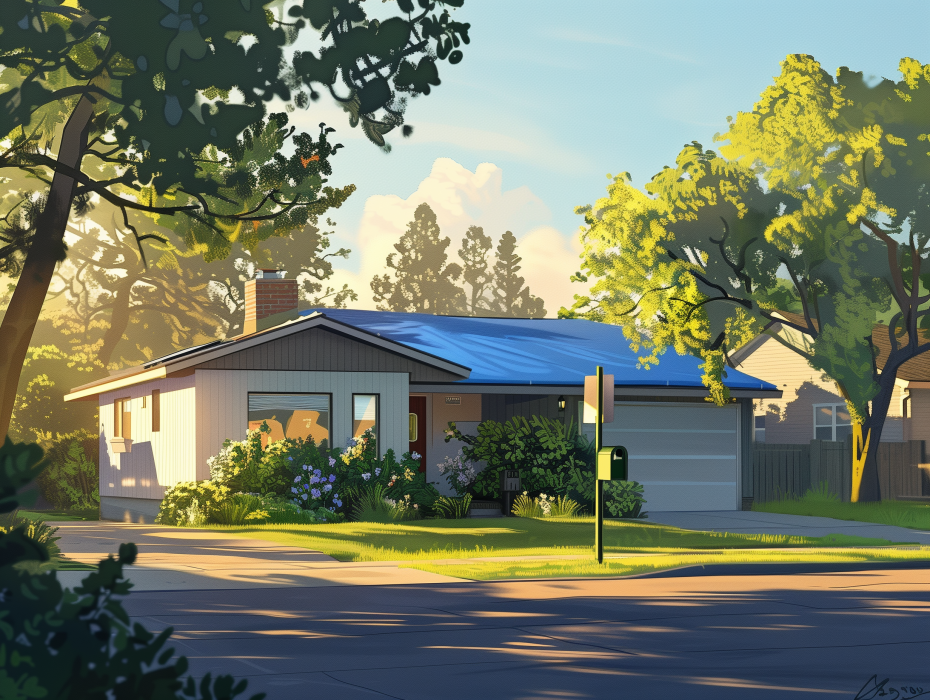Hail damage to asphalt shingles can significantly compromise the integrity of your roof, leading to costly repairs if not promptly addressed. This guide will help you identify hail damage, understand the inspection process, and take appropriate actions to maintain the longevity and effectiveness of your roofing system.
1. Verify the Hail Event
Before initiating an inspection, verify and confirm with your local weather bureau that a hail event was recorded for your specific area. This information can lend significant credibility to your claim process with your insurance carrier.
2. Initial Signs of Hail Damage
The first indication of hail damage will be any obvious damage to the field shingles, roof vents, flashings, and hip & ridge shingles. These items will generally exhibit the most evident damage. Impacts from hailstones typically create depressions, dents, and other obvious scarring to the various surfaces of the roof system components.
3. Thorough Inspection of Field Shingles
If obvious hail damage is evident on the above items, a very thorough inspection of the field shingles is warranted. Inspect for the loss of, or loosening of, the 3M ceramic-coated granules on the shingles’ top surfaces. The impacting of the hailstones can loosen the adhesion of the granules to the coated asphalt substrate below. Granules will gradually begin to loosen and fall off as a result, either immediately or in a few months.
4. Inspect for Hidden Damage
Several shingles at random will need to be carefully raised to inspect for any rupturing of the back of the shingle substrate. Even if the top surface granules appear to be intact, there may be hidden rupturing of the shingle substrate. Virtually any rupturing of the fiberglass/asphalt substrate indicates a compromised life expectancy of the shingles and should be replaced.
5. Documenting Suspected Damage
If damage is suspected but not readily evident immediately after the hail event, take multiple, dated photos showing the condition and aesthetics of the entire roof at that time. These photos can be used as a reference in the future if the damage manifests itself later. The damage may exhibit itself much later due to the hail event and granule loss acceleration, which can cause obvious aesthetic and physical damage to show up over time. If damage is not indicated immediately after the storm, continue to monitor and document the field shingles, gutters, and downspouts for excessive granule losses for several months.
6. Consider Impact-Resistant Shingles
In hail-prone areas, consider installing replacement shingles classified by the UL 2218 testing protocol as Class 4, Impact Resistant. These Class 4 rated asphalt shingles are designed to preclude most future impact damage. In many areas of the country, insurance carriers offer very attractive and significant continuing discounts to homeowners who have installed the Class 4 Impact Resistant asphalt shingles. The Atlas Roofing Corporation’s StormMaster Shake and StormMaster Slate, CORE4 Technology modified asphalt shingles are given a Class 4 Impact Resistant rating for meeting the UL 2218 test for impact resistance.
7. Act Promptly on Insurance Settlements
There are instances when an insurance settlement is received for hail-damaged asphalt shingles, and the roof is not replaced within a reasonable time after the damage occurs. The loss of the ceramic-coated granules and/or ruptured shingle mat opens the entire assembly to accelerated weathering and very likely leakage into the finished interior of the structure. Literally “pocketing the settlement” will increase the actual costs of replacing the roof at a later date and diminishes the actual value of the structure.
Conclusion
Detecting and addressing hail damage promptly is crucial to maintaining the integrity of your roof and preventing further issues. By following the steps outlined in this guide, you can effectively identify hail damage and take the necessary actions to protect your home.
For Immediate Service or Consultation
Contact Allied Emergency Services, INC.
Phone: 1-800-792-0212
Email: Info@AlliedEmergencyServices.com
Location: Serving Illinois, Wisconsin, and Indiana with a focus on the greater Chicago area.
If you require immediate assistance or have specific questions, our human support is readily available to help you.
Disclaimer: This article is intended for informational purposes only. For professional advice, consult experts in the field.










